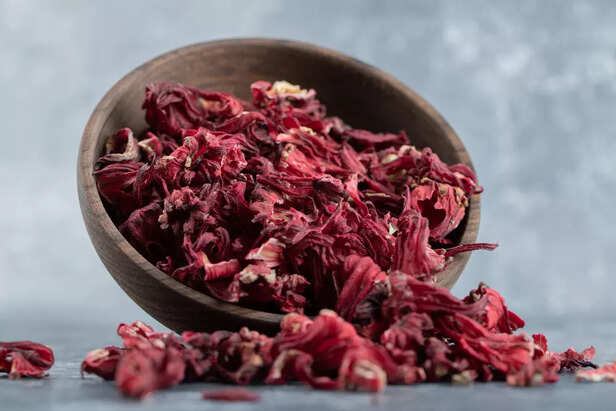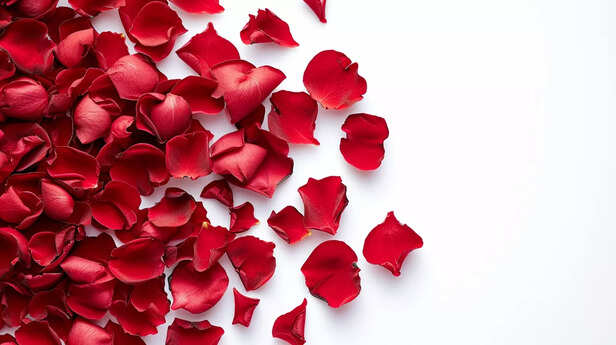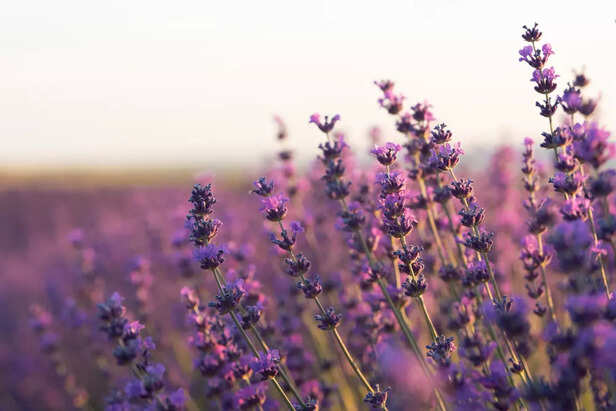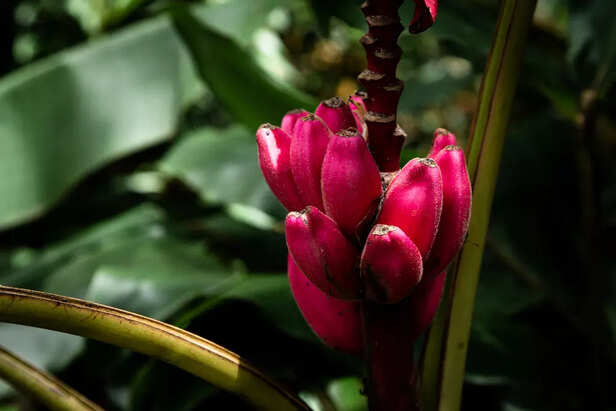7 Edible flowers and their hidden health benefits
Mandvi Singh | Jul 04, 2025, 23:09 IST
( Image credit : Timeslife )
Edible flowers are more than just a visual delight — they offer a wide range of hidden health benefits, from improving digestion and skin health to reducing stress and boosting immunity. Used for centuries in traditional medicine and now making a comeback in modern wellness, flowers like hibiscus, chamomile, rose, and blue pea are nutritional powerhouses in petal form. This article explores the top edible flowers and how to safely enjoy their healing properties.
When you think of flowers, your mind might drift to bouquets, wedding decor, or garden strolls. But in many traditional cultures — including Ayurveda and Chinese medicine — flowers have long been valued not just for their beauty but for their healing power.
Today, science is catching up. Edible flowers are making a comeback in gourmet kitchens and holistic diets alike. They're packed with antioxidants, vitamins, flavonoids, and anti-inflammatory compounds — and the best part? They’re as delicious as they are beautiful.
Let’s dive into 7 popular edible flowers and uncover their hidden health benefits.
1.

With its vibrant crimson hue and tart taste, hibiscus is commonly brewed as tea, known as “roselle” or “hibiscus sabdariffa”.
Health Benefits:
-Lowers blood pressure naturally
-Rich in vitamin C, boosting immunity
-Helps reduce cholesterol and inflammation
-Acts as a gentle diuretic and detoxifier
Try this: Sip chilled hibiscus tea or use dried petals in salads for a tangy twist.
2. Marigold (Calendula) – The Skin Healer
Known as “Genda” in India, calendula marigold has golden petals often used in teas, oils, and even soups.
Health Benefits:
-Powerful anti-inflammatory for skin conditions like eczema and acne
-Promotes wound healing and digestion
-Contains flavonoids and antioxidants for overall cell health
-May soothe menstrual cramp
Try this: Brew calendula tea or infuse it into oils and use as a topical balm.
3.

One of the most commonly used edible flowers, rose petals aren’t just romantic — they’re therapeutic.
Health Benefits:
-Natural antidepressant and stress reliever
-Enhances skin health and glow
-Acts as a coolant and digestive aid
-Supports hormonal balance in women
Try this: Add dried rose petals to desserts, rose water to smoothies, or sip rose tea.

This fragrant purple flower isn’t just for potpourri — it’s a star in aromatherapy and edible infusions.
Health Benefits:
-Promotes deep sleep and anxiety relief
-Has antibacterial and antifungal properties
-Supports gut health and digestion
-Can relieve headaches and tension
Try this: Stir into lemonades, add to herbal teas, or use in baking (sparingly — it’s potent!).
5. Chamomile – Nature’s Gentle Sedative
Chamomile flowers resemble mini daisies and are most famous for their use in bedtime teas.
Health Benefits:
-Induces relaxation and sleep
-Reduces bloating and digestive discomfort
-Eases menstrual pain and mood swings
-Anti-inflammatory for skin and gut
Try this: Enjoy as tea or add petals to oatmeal or yogurt for a soothing touch.
6. Blue Pea Flower (Shankhpushpi) – The Brain Booster
Also known as Butterfly Pea, this striking blue flower is used in Ayurvedic medicine as a nootropic.
Health Benefits:
-Enhances memory, focus, and cognition
-Rich in antioxidants and anthocyanins
-Supports mental clarity and emotional balance
-Natural anti-aging properties for skin
Try this: Brew blue tea or add the petals to rice for a visual and nutritional upgrade.

Though not typically seen as a flower in Western cuisine, banana blossoms are edible, fibrous, and nutrient-rich.
Health Benefits:
-High in iron and fiber — great for anemia
-Regulates blood sugar and digestion
-Supports menstrual health and mood
-Promotes gut cleansing and immunity
Try this: Use in stir-fries, fritters, or as a meat substitute in vegan dishes.
Safety Tips Before You Bite
While edible flowers are full of benefits, they should be consumed cautiously and correctly:
:Not all flowers are edible. Avoid flowers from florists or roadsides — they may be sprayed with pesticides.
:Learn correct identification. Many flowers have toxic lookalikes.
:Start small. Some flowers may trigger allergies or digestive reactions in sensitive people.
:Use culinary-grade flowers or grow your own organically.
Add a Bloom to Your Plate and Life
Edible flowers are more than just decoration — they’re tiny wellness bombs wrapped in color and flavor. From calming your nerves to cleansing your gut and boosting your skin glow, these blooms bring both beauty and benefits to the table.
So the next time you see petals on your dessert or in your tea — smile. You're not just eating pretty; you're eating powerful
Explore the latest trends and tips in Health & Fitness, Spiritual, Travel, Life Hacks, Trending, Fashion & Beauty, and Relationships at Times Life!
Today, science is catching up. Edible flowers are making a comeback in gourmet kitchens and holistic diets alike. They're packed with antioxidants, vitamins, flavonoids, and anti-inflammatory compounds — and the best part? They’re as delicious as they are beautiful.
Let’s dive into 7 popular edible flowers and uncover their hidden health benefits.
1. Hibiscus – The Heart’s Herbal Hero

Heart’s Herbal
( Image credit : Freepik )
With its vibrant crimson hue and tart taste, hibiscus is commonly brewed as tea, known as “roselle” or “hibiscus sabdariffa”.
Health Benefits:
-Lowers blood pressure naturally
-Rich in vitamin C, boosting immunity
-Helps reduce cholesterol and inflammation
-Acts as a gentle diuretic and detoxifier
Try this: Sip chilled hibiscus tea or use dried petals in salads for a tangy twist.
2. Marigold (Calendula) – The Skin Healer
Health Benefits:
-Powerful anti-inflammatory for skin conditions like eczema and acne
-Promotes wound healing and digestion
-Contains flavonoids and antioxidants for overall cell health
-May soothe menstrual cramp
Try this: Brew calendula tea or infuse it into oils and use as a topical balm.
3. Rose – The Mood and Skin Booster

rose-petals
( Image credit : Freepik )
One of the most commonly used edible flowers, rose petals aren’t just romantic — they’re therapeutic.
Health Benefits:
-Natural antidepressant and stress reliever
-Enhances skin health and glow
-Acts as a coolant and digestive aid
-Supports hormonal balance in women
Try this: Add dried rose petals to desserts, rose water to smoothies, or sip rose tea.
4. Lavender – The Calm in the Chaos

fragrant purple flower
( Image credit : Freepik )
This fragrant purple flower isn’t just for potpourri — it’s a star in aromatherapy and edible infusions.
Health Benefits:
-Promotes deep sleep and anxiety relief
-Has antibacterial and antifungal properties
-Supports gut health and digestion
-Can relieve headaches and tension
Try this: Stir into lemonades, add to herbal teas, or use in baking (sparingly — it’s potent!).
5. Chamomile – Nature’s Gentle Sedative
Health Benefits:
-Induces relaxation and sleep
-Reduces bloating and digestive discomfort
-Eases menstrual pain and mood swings
-Anti-inflammatory for skin and gut
Try this: Enjoy as tea or add petals to oatmeal or yogurt for a soothing touch.
6. Blue Pea Flower (Shankhpushpi) – The Brain Booster
Health Benefits:
-Enhances memory, focus, and cognition
-Rich in antioxidants and anthocyanins
-Supports mental clarity and emotional balance
-Natural anti-aging properties for skin
Try this: Brew blue tea or add the petals to rice for a visual and nutritional upgrade.
7. Banana Blossom (Banana Flower) – The Iron-Rich Superfood

Banana Flower
( Image credit : Freepik )
Though not typically seen as a flower in Western cuisine, banana blossoms are edible, fibrous, and nutrient-rich.
Health Benefits:
-High in iron and fiber — great for anemia
-Regulates blood sugar and digestion
-Supports menstrual health and mood
-Promotes gut cleansing and immunity
Try this: Use in stir-fries, fritters, or as a meat substitute in vegan dishes.
Safety Tips Before You Bite
:Not all flowers are edible. Avoid flowers from florists or roadsides — they may be sprayed with pesticides.
:Learn correct identification. Many flowers have toxic lookalikes.
:Start small. Some flowers may trigger allergies or digestive reactions in sensitive people.
:Use culinary-grade flowers or grow your own organically.
Add a Bloom to Your Plate and Life
So the next time you see petals on your dessert or in your tea — smile. You're not just eating pretty; you're eating powerful
Explore the latest trends and tips in Health & Fitness, Spiritual, Travel, Life Hacks, Trending, Fashion & Beauty, and Relationships at Times Life!
Frequently Asked Question:
- Which edible flower is best for stress relief?
Lavender, chamomile, and rose are excellent for calming the mind. - How can I use edible flowers at home?
Infuse in teas, sprinkle over salads, mix into desserts, or blend into smoothies.
